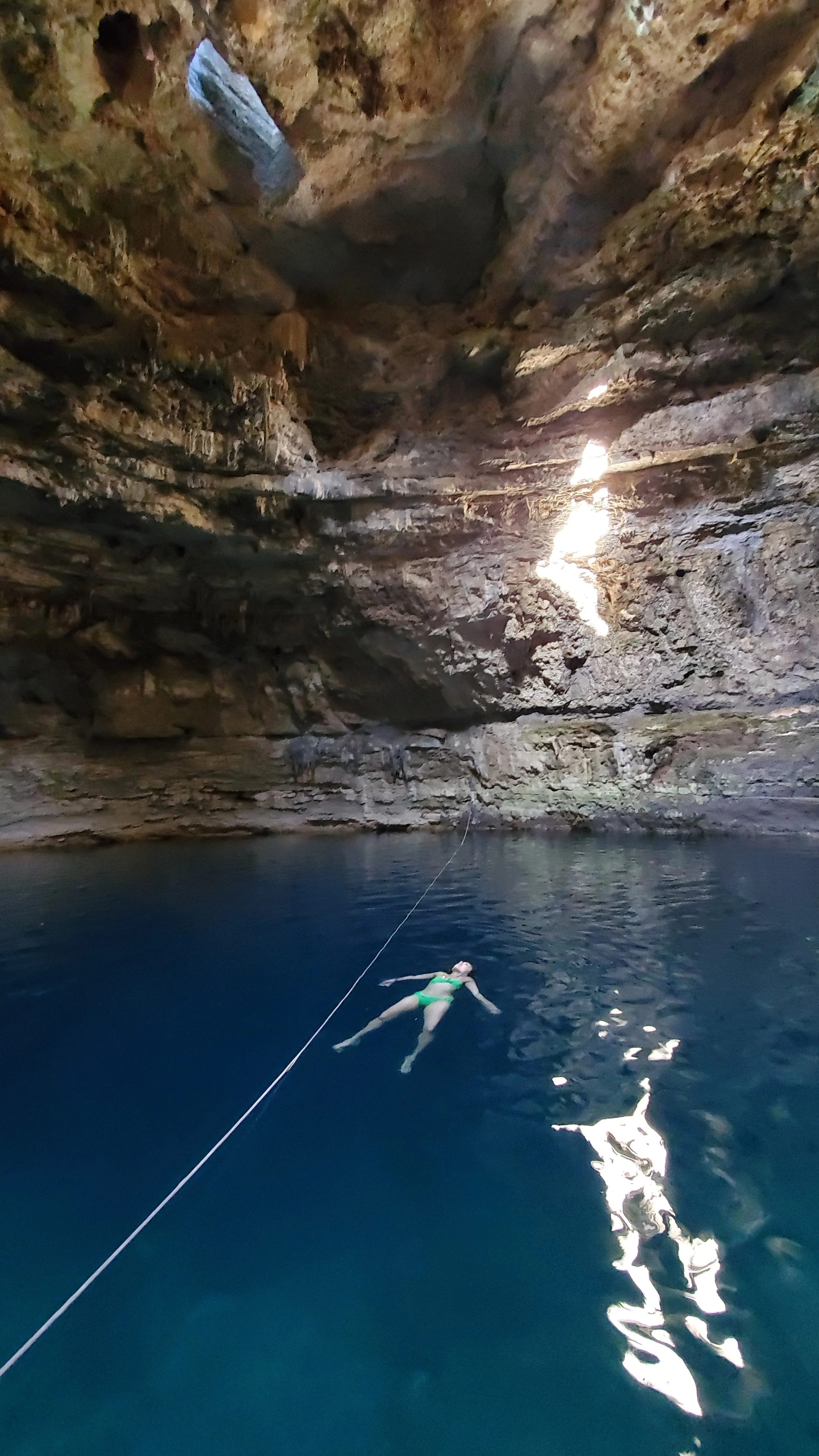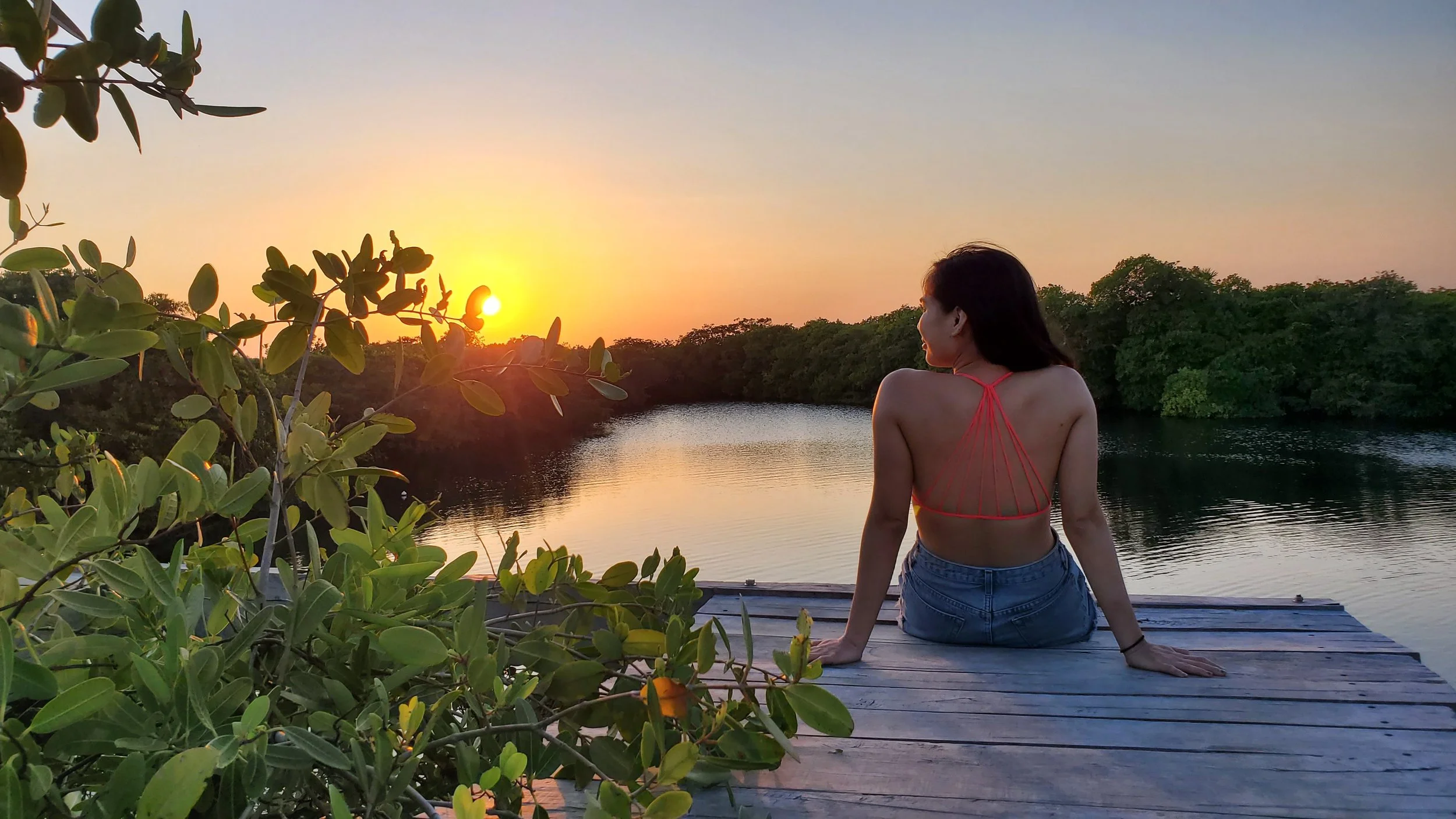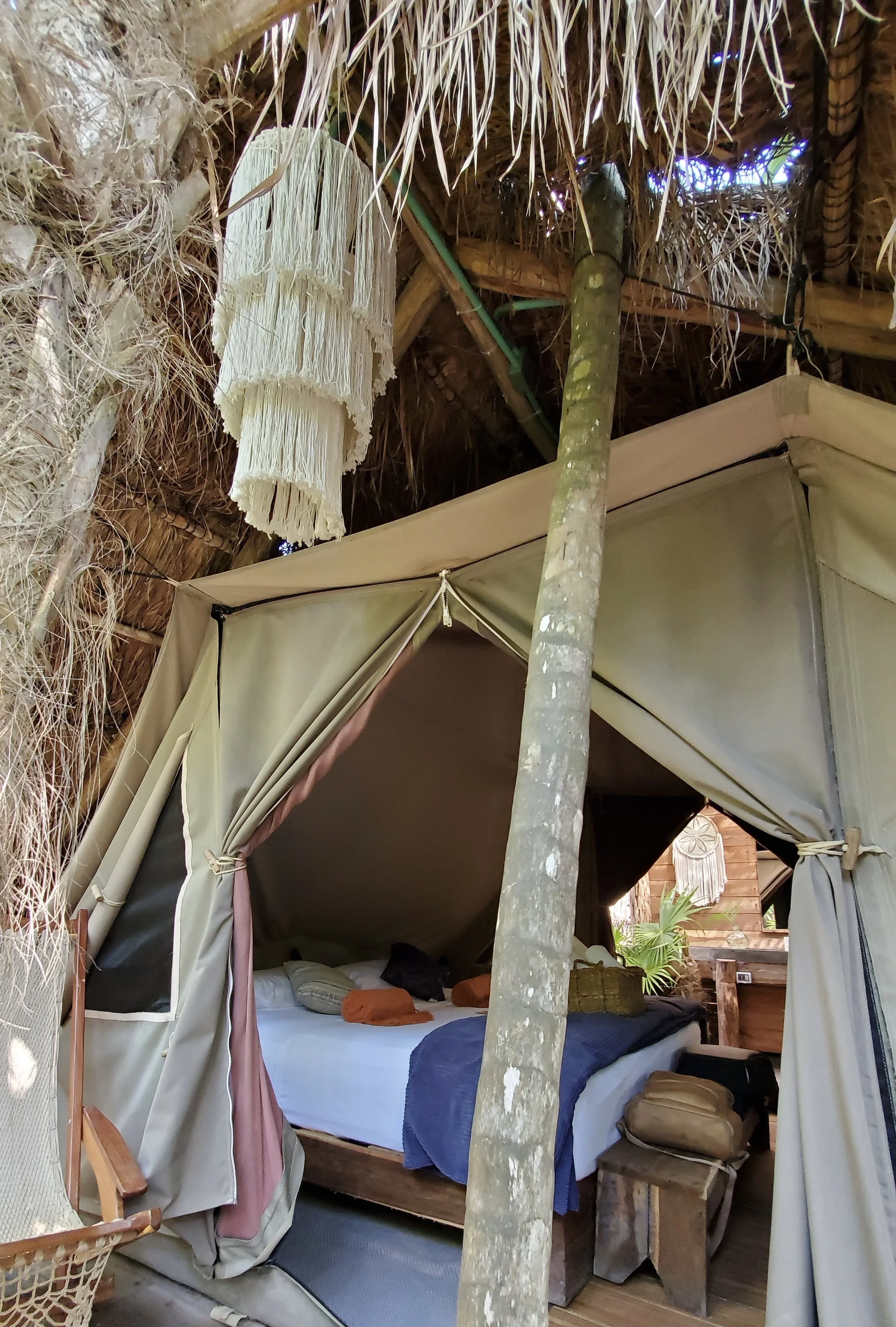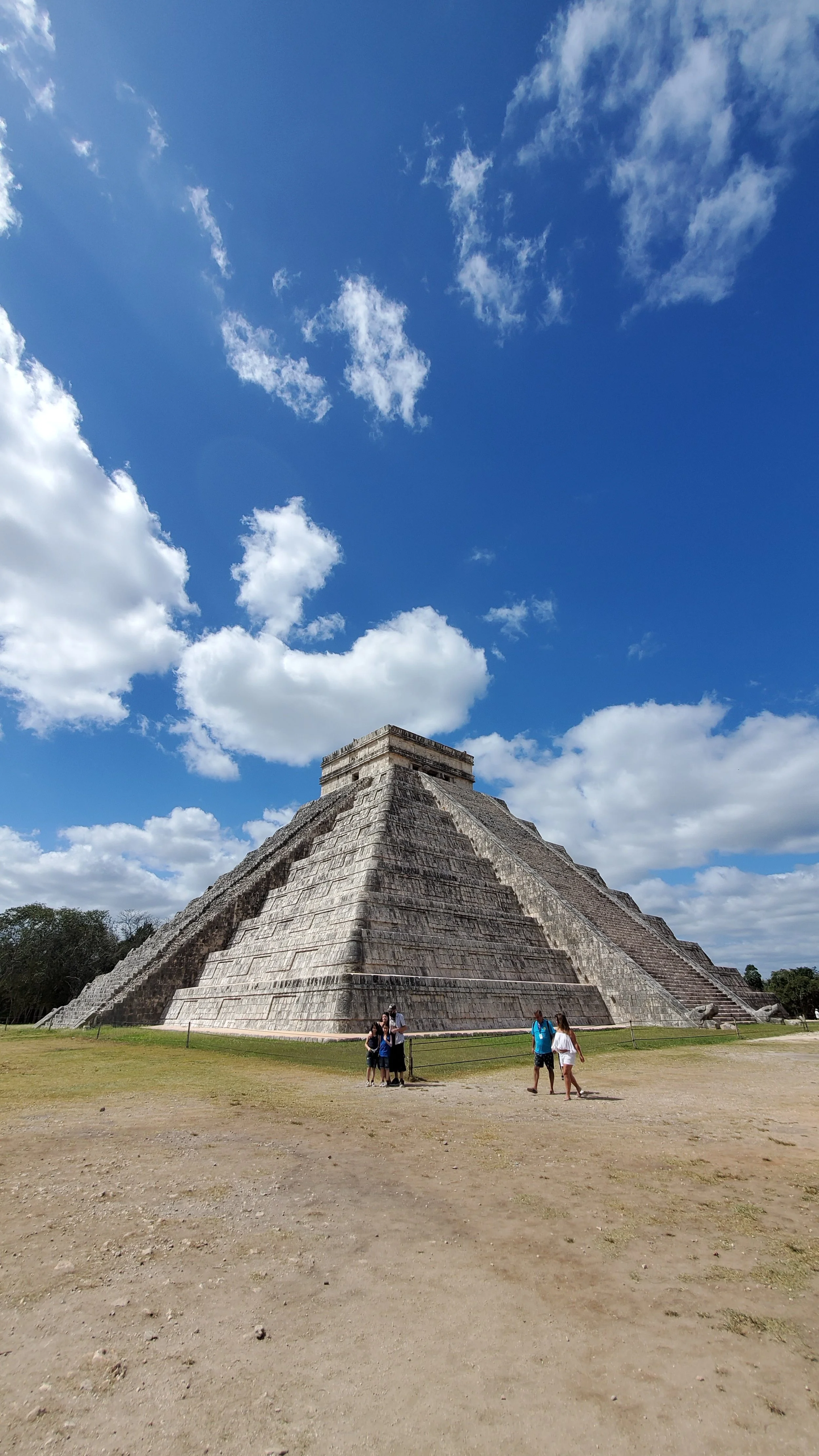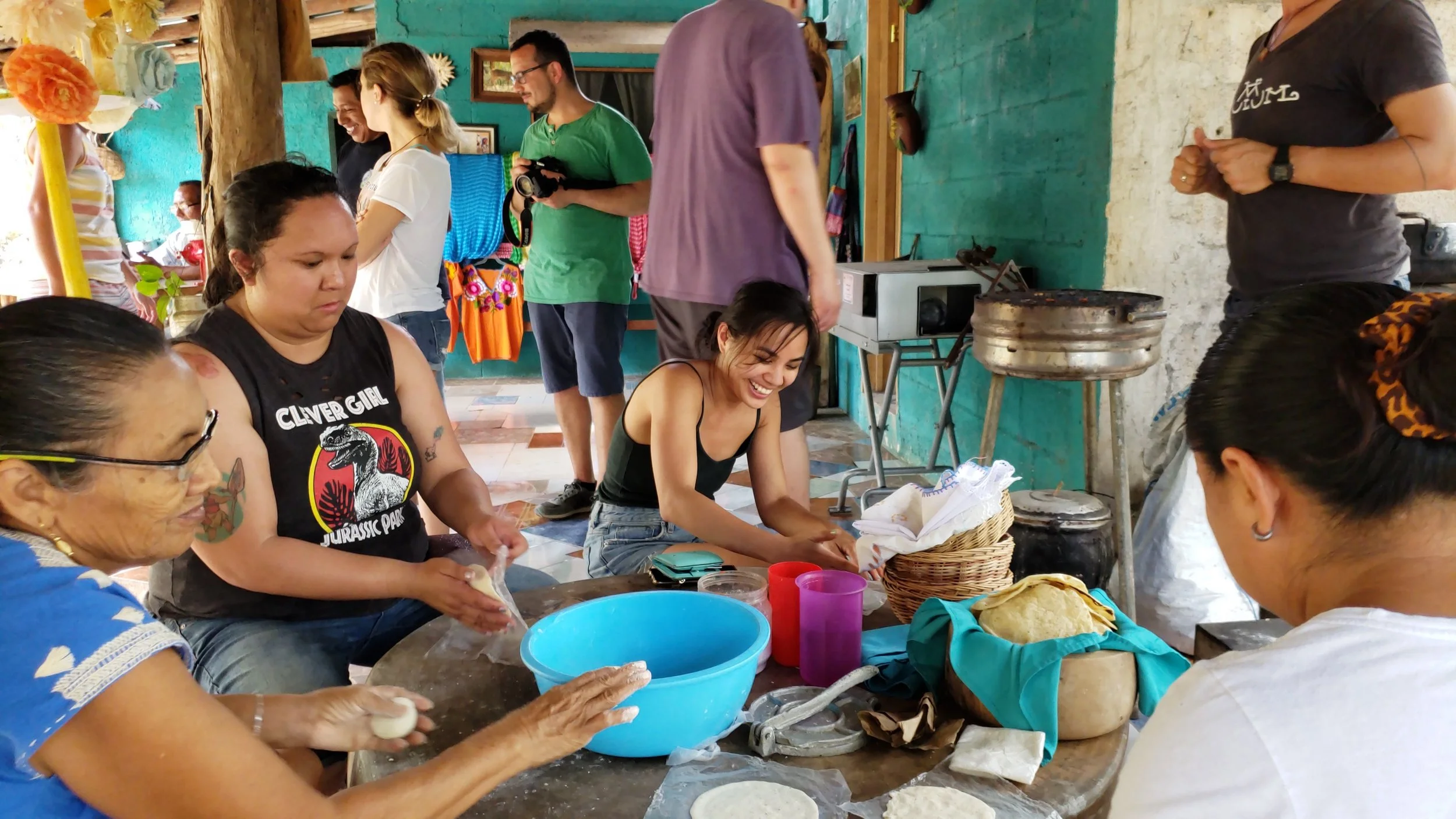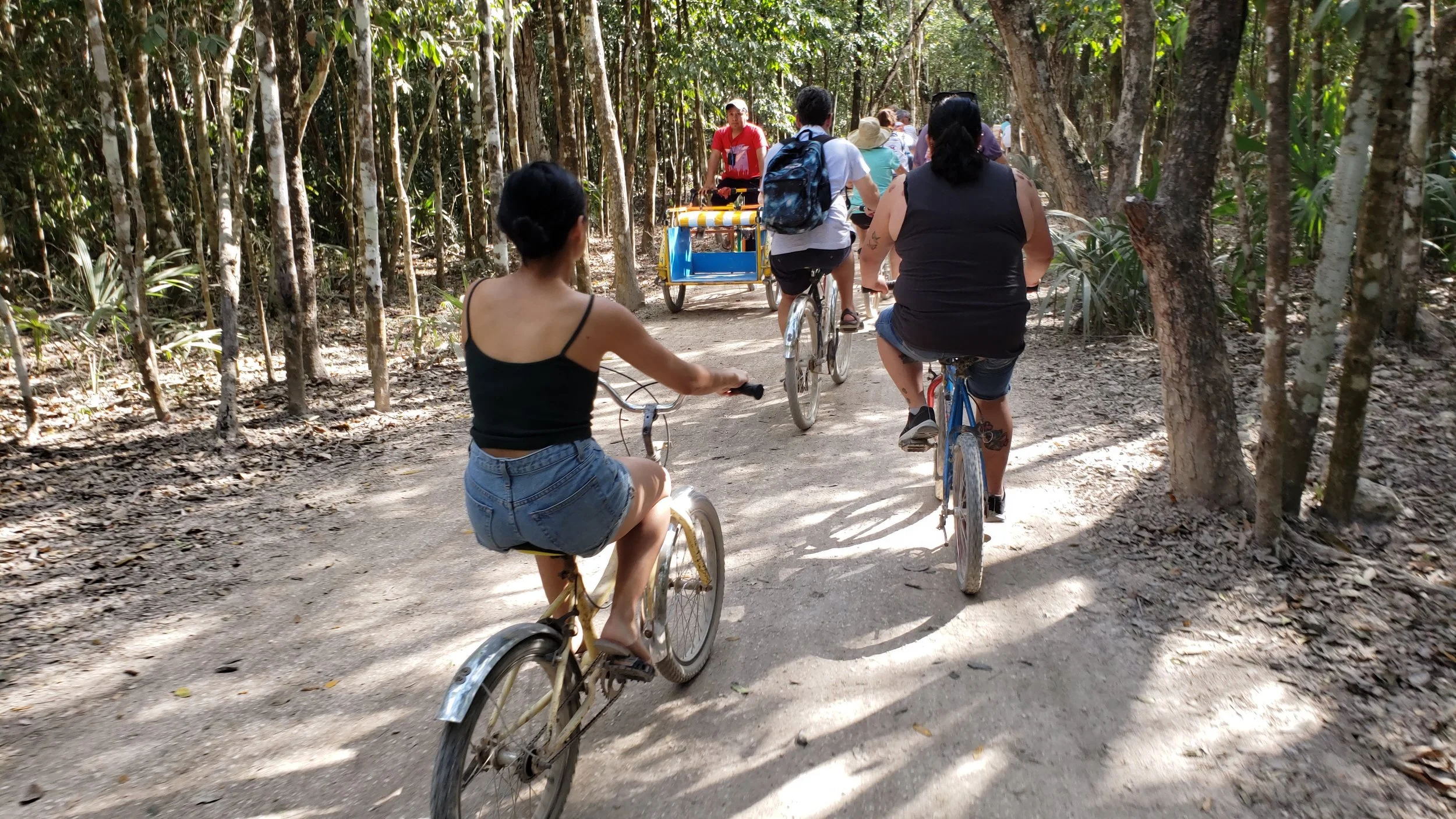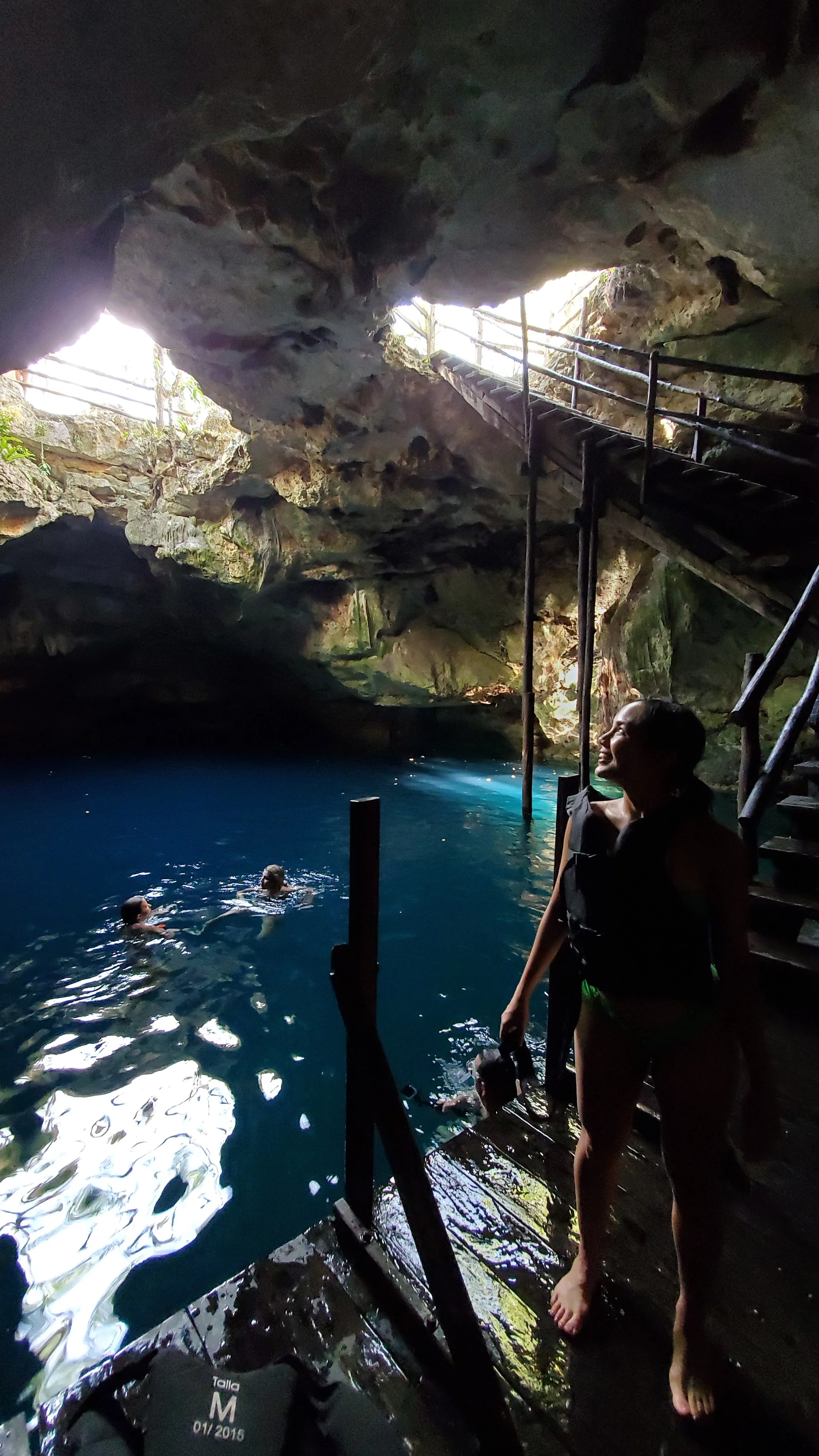Tulum
Tulum is beautiful. Like, really beautiful. I'm from Hawaii and even I was in awe of the beaches, the cenotes, and the jungle. Unfortunately, the rest of the world also knows how beautiful Tulum is, which is why it’s probably one of the most touristy places I’ve ever visited. After interacting with locals constantly in Cuba (the , it was off-putting to be surrounded by so many influencers and wealthy Europeans in Tulum. Regardless, I made the most of it and tried my best to find ways to do Tulum differently.
Stay
Most tourists in Tulum stay in outrageously expensive resorts on the beach. Many of these resorts are imaginatively designed and undeniably stunning, so if you have some extra cash, you can stay at Azulik, where you pay $700/night for a villa with no roof or no WiFi. Instead, I stayed at a “glamping” hotel called Nativus Tulum. The hotel contains six tents tucked into their own little corners of the property, each with zippered screens to keep any bugs out, a spa-worthy outdoor bathroom, and a backyard with a hammock and outdoor seating.
The entire property had WiFi, complimentary bike rentals, an outdoor yoga studio, and huge breakfasts every morning. The best part, however, was direct access to a cenote, where I kayaked, paddleboarded, and watched the sunset from the deck. And if I wanted to go to the beach, all we had to do was cross the street and enter through a hotel. Since our hotel was on the southern end of Tulum, this part of the beach wasn’t crowded at all.
This is how to do Tulum.
Do
I booked a couple of all-day tours with MexicoKan. My first tour, Mayan Inland Expedition, was my favorite. We were driven deep into the state of Quintana Roo to the ancient Mayan city of Cobá, once the most powerful city in the region. Massive pyramids and monuments had been buried in the jungle for over a thousand years, only recently discovered by archaeologists. Lush vegetation still covers most of the city, and it’s exciting to see only half-excavated ruins emerging from the vines and tree roots.
I biked through Cobá, climbed the pyramid of Ixmoja, ziplined across a turquoise lake in the Punta Laguna nature reserve, and made fresh tortillas for our homecooked lunch with a local family.
Our last activity on this tour was swimming in a cenote that we had all to ourselves. A cenote is a deep, water-filled sinkhole in limestone created when the roof of an underground cavern collapses. This creates a natural pool which is then filled by rain and water flowing from underground rivers. The water in these cenotes is crystal-clear, calcium-rich freshwater. The calcium levels are so high, in fact, that it’s hard to tread the water; I had to wear a lifejacket because my arms were getting so tired! The Yucatán Peninsula has thousands of these cenotes because the ground is primarily made up of porous limestone. Cenotes were the area's main source of water and played an important role in ancient Mayan civilization, as passages to the underworld and sites for sacrificial purposes.
The next day, I had another tour with the same company. We started off at Chichen Itza, with the iconic, wonderfully symmetrical pyramid, Temple of Kukulkan.
Nearby is the Great Ball Court, the largest and best preserved ball court in ancient Mesoamerica. This sport was played throughout the Mayan civilization, and also functioned as a sacrificial and religious event. The winning team’s captain was decapitated — an honorable sacrifice to the gods. A rubber ball could be hit with the right hip, right elbow, and right knee, but no hands. The aim was to move the ball through the stone ring up high.
After Chichen Itza, we had lunch at a beautiful former mansion in Valladolid, a quiet colonial town. Then we swam in another cenote, which was even more impressive than yesterday’s. It had a rope running through the middle just in case you got tired from swimming in the calcium-rich waters. On our way out, we looked at the fossils inlaid in the cenote walls -- proof that the entire Yucatan used to be underwater.
Tips
Tips
There are ATMs everywhere, and many of them only give out USD, which just highlights how tourist-centric this place is.
I used a car service called eTransfers to and from the airport. I paid online, and they showed up on time and in a comfortable van.
If you only do three things in Tulum: enjoy the stunning beach, visit a few cenotes (they’re all unique, so you’ll want to explore more than one), and book the Mayan Inland Expedition tour with MexicoKan. MexicoKan Tours picks you up directly from your hotel in the morning and drops you off just before sunset.
Wake up early and watch the sunrise from the beach, since Tulum faces east.
